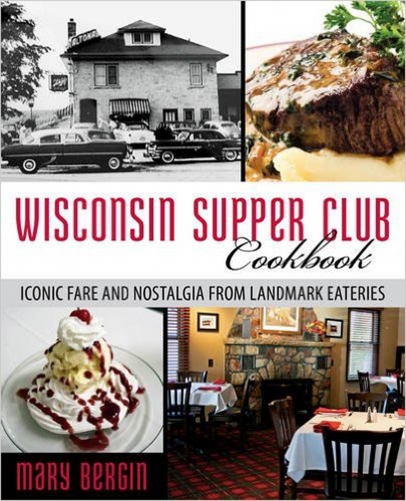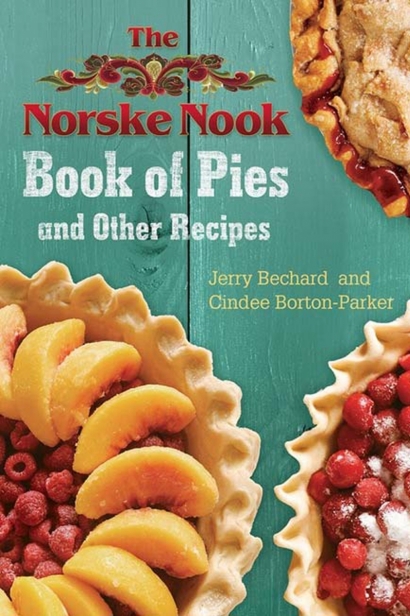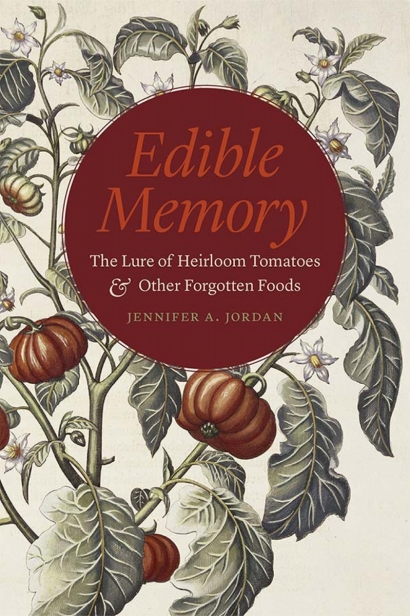Regional Reads for the Gift-Giving Season
Books to Devour
Food publishing certainly has come a long way. Consider the number of regionally-focused cookbooks and culinary histories that were published in 2015—so many, in fact, that I can’t fit them all into this year’s round-up of food-focused titles. Here, instead, is a selected list for all the cooks, locavores and history buffs on your shopping list.
Wisconsin Supper Club Cookbook: Iconic Fare and Nostalgia from Landmark Eateries, by Mary Bergin (Globe Pequot). Long-time supper club aficionados (like me) are enjoying a resurgence of interest in this idiosyncratic and much-beloved regional tradition. They’re the subject recently of no less than three documentary films, two books and various radio programs. Now, respected food journalist Mary Bergin adds her perspective to the evolving story of supper clubs with this combination cookbook-travel guide. You’ll find recipes for Wisconsin beer cheese chowder, whitefish almondine and Door County cherry sauce alongside anecdotes from the Gib’s on the Lake, Altona Supper Club, and 38 additional rural and urban establishments around the state. I just might have to get another copy so I can keep one in the kitchen and one beneath the driver’s seat of my car.
Wisconsin Agriculture: A History, by Jerry Apps (University of Wisconsin Press). Is there anyone who observes, documents or embraces the Dairy State’s rural heritage more than Jerry Apps? There is not. The beloved emeritus professor, writing teacher and author of dozens of books about barns, cheese, beer, gardening and farm life, Apps brings his signature focus to a handsome new book that examines the full spectrum of Wisconsin’s agricultural history. If you think farming here has been all about cows and corn, think again. Apps covers the obvious and the surprising: cherries, apples, cranberries, beef cattle, fur farming, Christmas trees, maple syrup, hemp, ginseng, sugar beets, mint, sphagnum moss, flax, hops, aquaculture, beekeeping, urban farming…and, well, you get the picture. Now go get the book, and join Jerry in celebrating the cornucopia-like splendor of our state.
Homemade with Honey, by Sue Doeden and Astonishing Apples, by Joan Donatelle (both from Minnesota Historical Society Press). These are the latest two ingredient-focused titles from the Northern Plate culinary series, which shine a historical as well as culinary light on the agricultural bounty of the Upper Midwest. The recipes go far beyond the basics to include both sweet and savory dishes like apple rumaki, Brie with apple chutney, honey-kissed fried fish and harvest cupcakes with honey cream cheese frosting. Both books will lure you into the kitchen and keep you cooking happily through the year.
The Norske Nook Book of Pies and Other Recipes, by Jerry Bechard and Cindee Borton-Parker (University of Wisconsin Press). Osseo’s small-town café opened in 1973 and gained national pie celebrity when its original owner Helen Myhre appeared on The Late Show with David Letterman. Now it’s part of a multi-restaurant family that attracts tourists from around the world. The current owners have responded to years of customer requests for more recipes with this cookbook (Myhre did a previous one). The up-close, full-page photos will surely get your pie juices fl owing and the volume is a welcome collection of heartland pies, cheesecakes, tortes, muffins and cookies (including four cherry desserts). But one heads-up: While most of the book is lucidly written, there is a bewildering instruction in many of the pie recipes to bake them at 375 degrees for about 2 hours. Which will give you burnt pie.
Homemade for Sale: How to Set Up and Market a Food Business From Your Home Kitchen, by Lisa Kivirist and John D. Ivanko (New Society Publishers). This is an indispensable resource from two of the region’s most thoughtful, well-practiced advisers on food and sustainability. Spurred by recently enacted “Pickle Bills” (laws that allow more food entrepreneurs to operate from home kitchens), the authors have written an authoritative guide for food entrepreneurs looking for an income source, a fun project or a way to help grow the local food movement. Kivirist and Ivanko cover product development, marketing, and structuring and managing a small-scale business with intelligence and enthusiasm.
Edible Memory: The Lure of Heirloom Tomatoes and Other Forgotten Foods, by Jennifer A. Jordan (University of Chicago Press). Passion combined with scholarship make this an unusual study of the ways nostalgia, food fashions and food politics intersect and shape each other. UW-Milwaukee sociology professor Jennifer Jordan delves into not only the darlings of the heirloom scene—tomatoes and apples—but also an array of foods that have less cache or have lost favor over time, such as turnips, kale, parsnips and even Jell-O. Both warmly written and much-documented, her book succeeds in illustrating how our “deep culinary connection to the past influences not only the foods we grow and consume, but the ways we shape and imagine our farms, gardens and local landscapes.”
Midwest Maize: How Corn Shaped the U.S. Heartland, by Cynthia Clampitt (Heartland Foodways). Food historian Cynthia Clampitt explores the astounding story of how corn developed from a humble grain into one of the greatest achievements in history. This is a likable, deeply-researched book that deftly covers a great deal of territory for its size, including: how a Mexican weed came to feed—literally and culturally—two continents; how it went from being disdained to dominant in the U.S.; how it built cities, industries and our very food supply; and the many ways it is intimately linked to Midwestern development and culture. The serious stuff is balanced, too, with sections on popcorn, corn festivals, corn cuisine and more.









